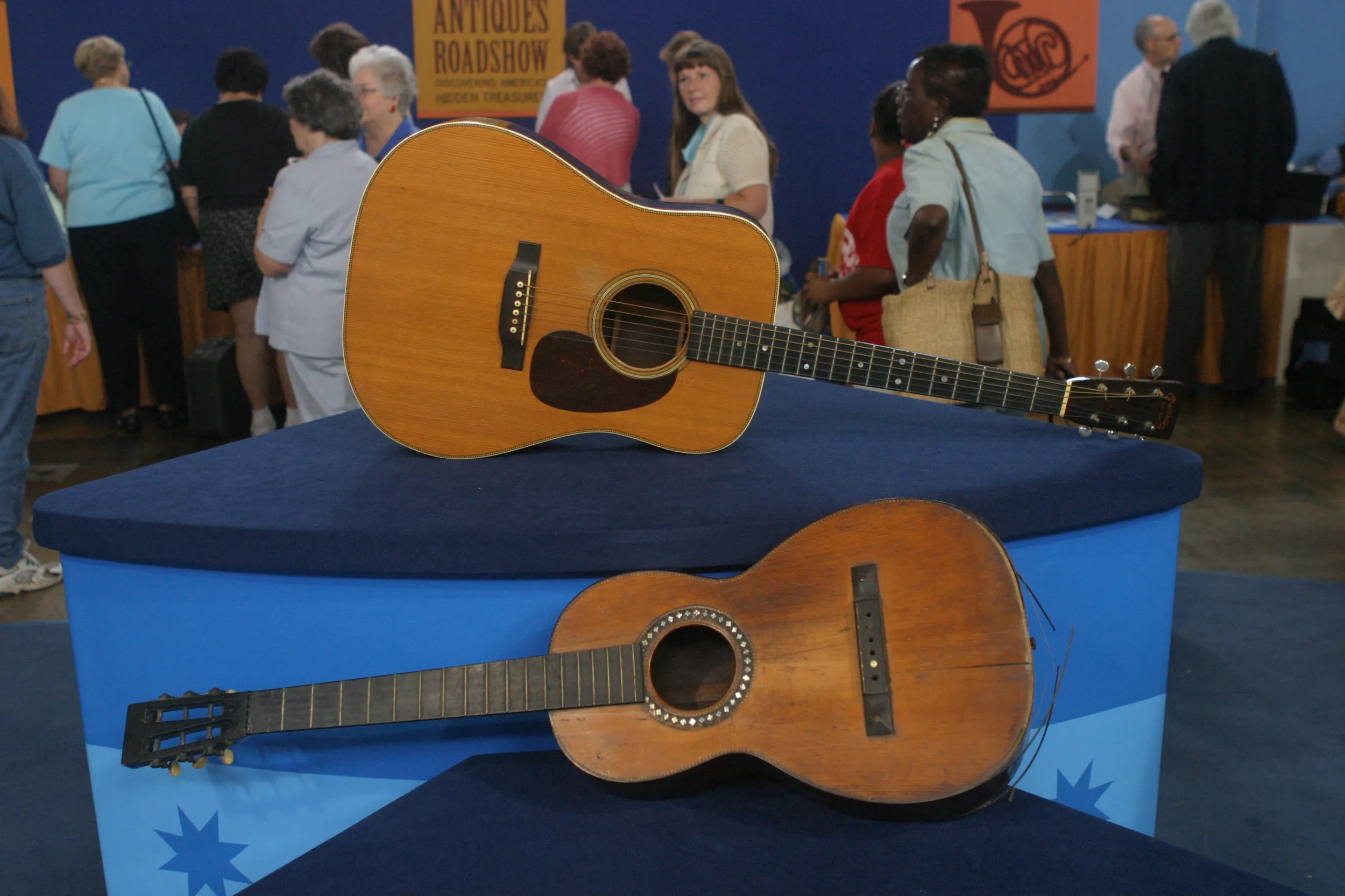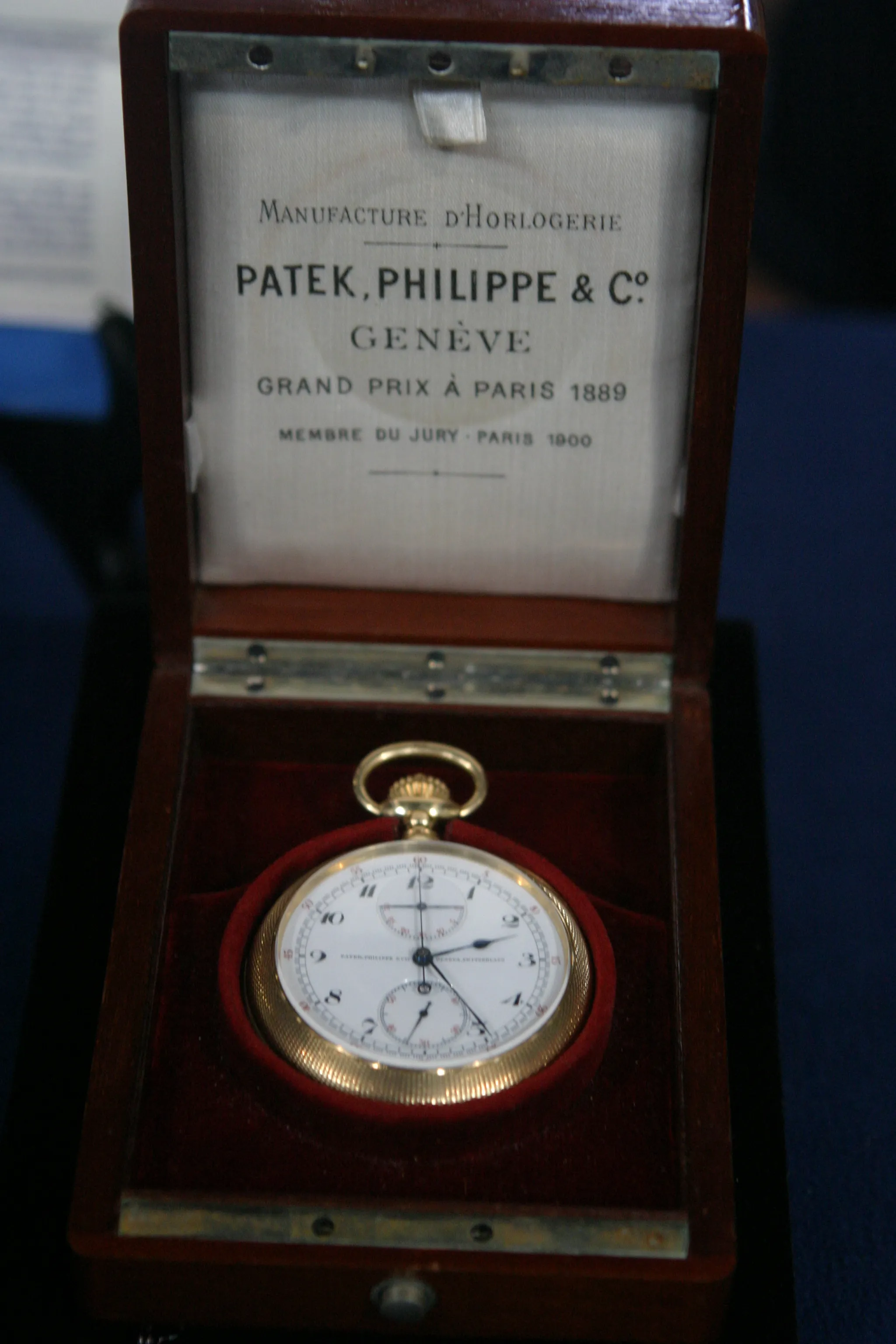GUEST: It was a violin that my Aunt Vivian had used. We know it's really old. It was inherited by my immediate family about 30 years ago, and frankly, it's been sitting in a, in a closet over the last 30 years.
APPRAISER: So your family believes that it's actually from the 16th century, because it's got a label that says, "Gaspar Tieffenbrucker, 1519," and it's something that your great-aunt played in recital.
GUEST: Yes.
APPRAISER: And it's been...
GUEST: She was quite a musician.
APPRAISER: And it's been in your family all this time. This is a very unusual style, because it has, instead of a spiral scroll, it has a carved man's head.
GUEST: Mm-hmm.
APPRAISER: Some people believe that to be the head of the maker, Gaspar Tieffenbrucker. But you can see that the carving on this example is quite fine, especially the detail in the beard.
GUEST: Mm-hmm.
APPRAISER: And the eyes, and all of the facial features-- his hooked nose. There is actually an etching that exists of Gaspar Tieffenbrucker that this is taken from. As we head down towards the bottom of the instrument, we see a beautifully inlaid, flamed maple fingerboard. Coming down the face of the violin, we see various relief-carved motifs. On the sides, we see wood inlaid to look like an old city scene. As we go to the back of the instrument, this is where it gets really spectacular. We have three types of decoration. We have the relief carving at the top, we have an oil painting, and all of this intricate inlaid wood that shows a scene of an ancient city. It's not actually from the 16th century. It's a French instrument that was made in the 1800s, probably by the shop of Derazey in Mirecourt, France.
GUEST: Mm-hmm.
APPRAISER: But it was done very, very beautifully, and it was done true to style.
GUEST: Uh-huh.
APPRAISER: Now, your aunt had an outfit here. She's got a case and a bow-- let's look at the bow. It looks rather plain.
GUEST: Mm-hmm.
APPRAISER: It looks a little bit like it hasn't been used in quite a while. The hair is broken on it.
GUEST: Mm-hmm.
APPRAISER: As we take it out, we see that it's actually a very fine bow. In its simplicity, it's got a certain elegance. This bow was actually made in probably the late 1940s in the shop of Eugène Sartory in Paris. It has a mother-of-pearl inlay in the eye of the frog, and it's got beautiful sterling silver fittings.
GUEST: Mm-hmm.
APPRAISER: It's got a beautifully carved head up here.
GUEST: Mm-hmm.
APPRAISER: And that was all done by hand. Done by knife work. This bow by Eugène Sartory is a classic example of one of the most innovative makers of the 20th century. As I turn it around, you can see his stamp on the shaft of the bow. The value of your violin is between $3,000 and $4,000.
GUEST: Uh-huh.
APPRAISER: The value of this bow, although it was purchased to accompany the violin probably for $100 or so, is worth at a retail violin shop $14,000 to $15,000 today.
GUEST: Holy smokes! When was the bow made?
APPRAISER: Late 1940s.
GUEST: No kidding! Wow.












